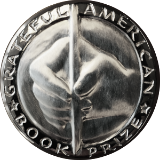April 16 — April 30, 2022
History Matters
Showing our children that their past is prelude to their future
In 1860, Henry Wadsworth Longfellow published a poem called “Paul Revere’s Ride,” that was inaccurate. He claimed Revere acted alone on the night of April 18, 1775, when he took off to warn John Hancock, Samuel Adams–and a gaggle of patriots– that the British were nearing Lexington.
Actually, he was accompanied by his partner, William Dawes.
According to History.com, “They took separate routes in case one of them was captured: Dawes left the city via the Boston Neck peninsula and Revere crossed the Charles River to Charlestown by boat. As the two couriers made their way, Patriots in Charlestown waited for a signal from Boston informing them of the British troop movement. As previously agreed, one lantern would be hung in the steeple of Boston’s Old North Church, the highest point in the city, if the British were marching out of the city by Boston Neck, and two lanterns would be hung if they were crossing the Charles River to Cambridge. Two lanterns were hung, and the armed Patriots set out for Lexington and Concord accordingly.”
When the British forces arrived in Lexington the following morning, a troop of seventy-seven camouflaged Minute men were waiting on the village green; suddenly, a shot was fired—from where it came—British or Colonial musket no one knows. But Ralph Waldo Emerson immortalized the development in his “Concord Hymn” as “…the shot heard round the world” – and opened America’s campaign for independence.
For more information, the Grateful American Book Prize recommends the Muskets and Minuets by Lindsey Fera.

On April 20, 1841, Edgar Allan Poe’s The Murders in the Rue Morgue was the first detective story to be published in Graham’s Lady’s and Gentleman’s Magazine. It was a precursor to the fiction of Sir Arthur Conan Doyle, creator of the private detective, Sherlock Holmes.
Rue Morgue touted the skills of sleuth Auguste Dupin who, according to History.com, uses “analytical power to solve a series of murders in Paris. Like the later Sherlock Holmes stories, the tale is narrated by the detective’s roommate.” Holmes’ pal, Dr. Watson, also “narrates” many of the cases described in Arthur Conan Doyle’s books.
History.com reports that by “the 1930s, sometimes called the golden age of detective stories, the noir detective novel became the mainstay of writers like Dashiell Hammet, Raymond Chandler, and Mickey Spillane. Tough female detectives such as Kinsey Millhone and V.I. Warshawski became popular in the 1980s.”
The Grateful American Book Prize recommends Poe’s The Murders in the Rue Morgue.

The Library of Congress has millions of books, recordings, photographs, newspapers, maps, and manuscripts in its collection. That is how the LOC describes itself.
Founded on April 24, 1800, it amassed 964 volumes within two years. Then, the War of 1812 began, and the library was burned to the ground.
The retired Thomas Jefferson volunteered to restore it and sold his books to Congress. According to History.com, “The purchase of Jefferson’s 6,487 volumes was approved in the next year, and a professional librarian, George Watterston, was hired to replace the House clerks in the administration of the library. In 1851, a second major fire at the library destroyed about two-thirds of its 55,000 volumes, including two-thirds of the Thomas Jefferson library. Congress responded quickly and generously to the disaster, and within a few years a majority of the lost books were replaced.”
History.com notes that the LOC is one of the largest in the world “containing 17 million books as well as millions of maps, manuscripts, photographs, films, audio and video recordings, prints, drawings and digital materials housed in three enormous buildings” in Washington, DC.
For more information, the Grateful American Book Prize recommends America’s Greatest Library: An Illustrated History of the Library of Congress by John Y. Cole.

History Matters is a biweekly feature courtesy of The Grateful American Book Prize.




